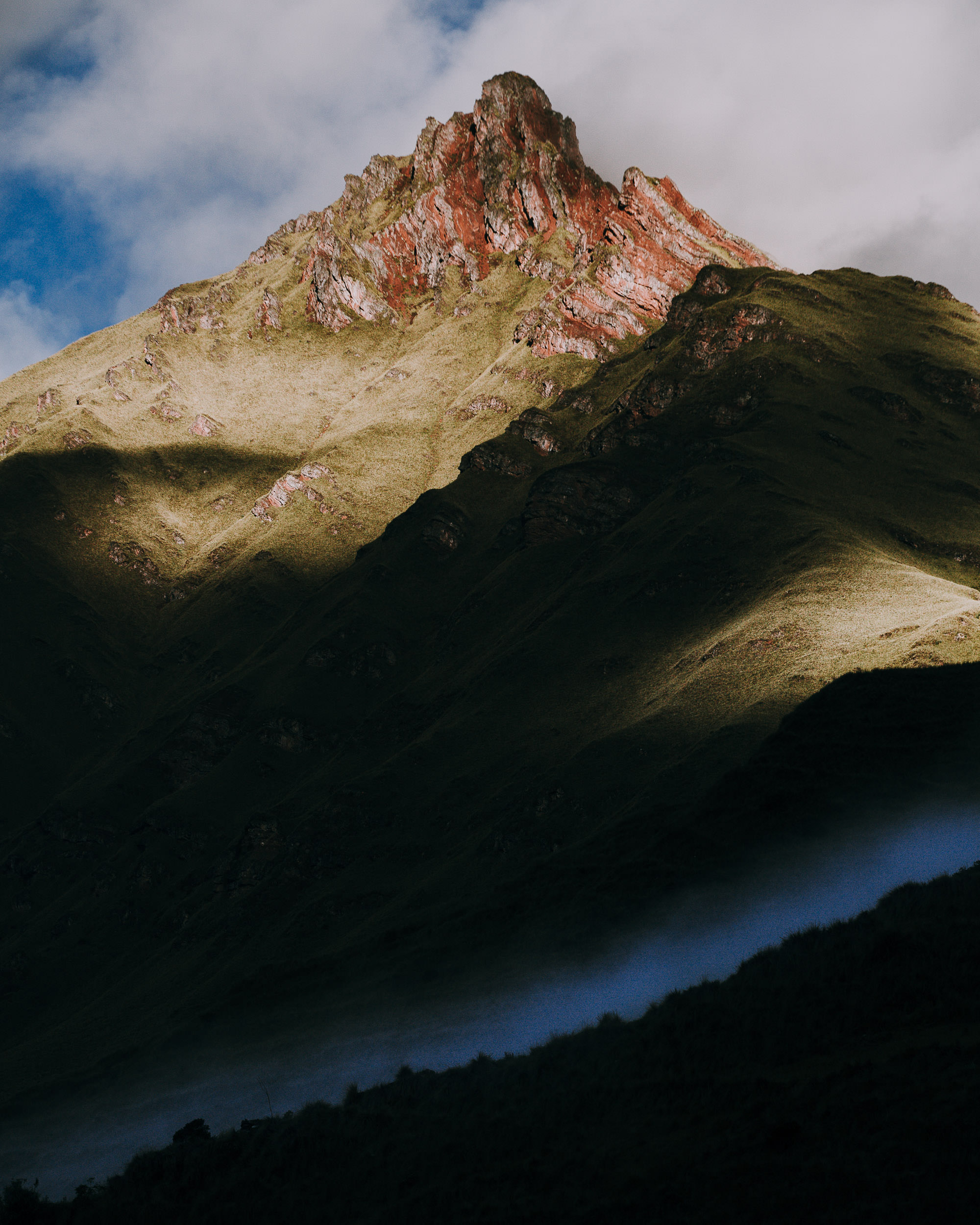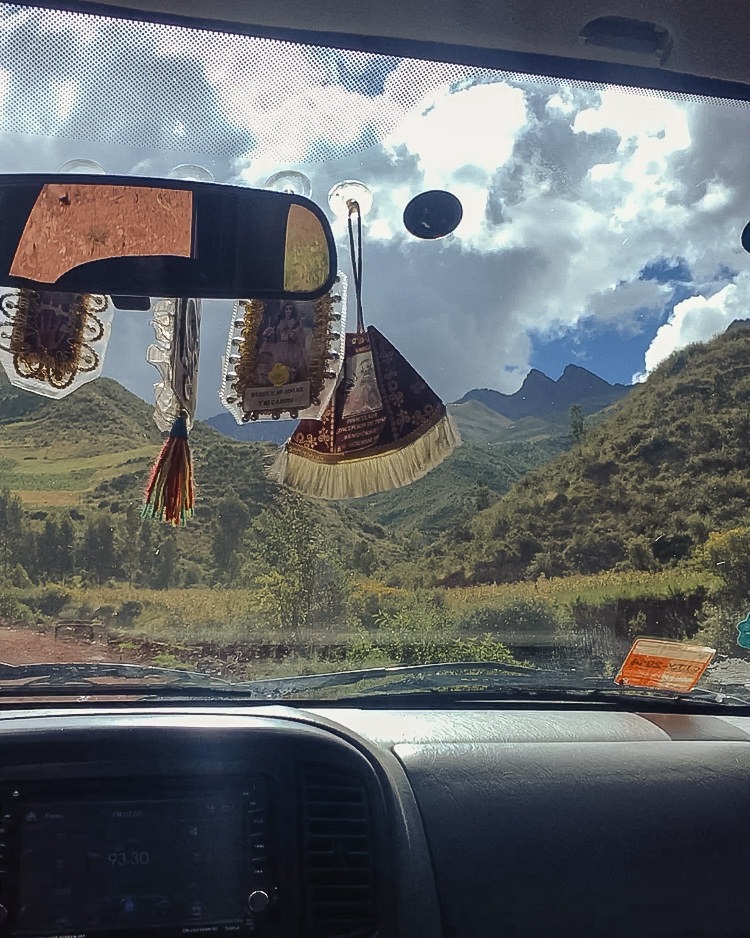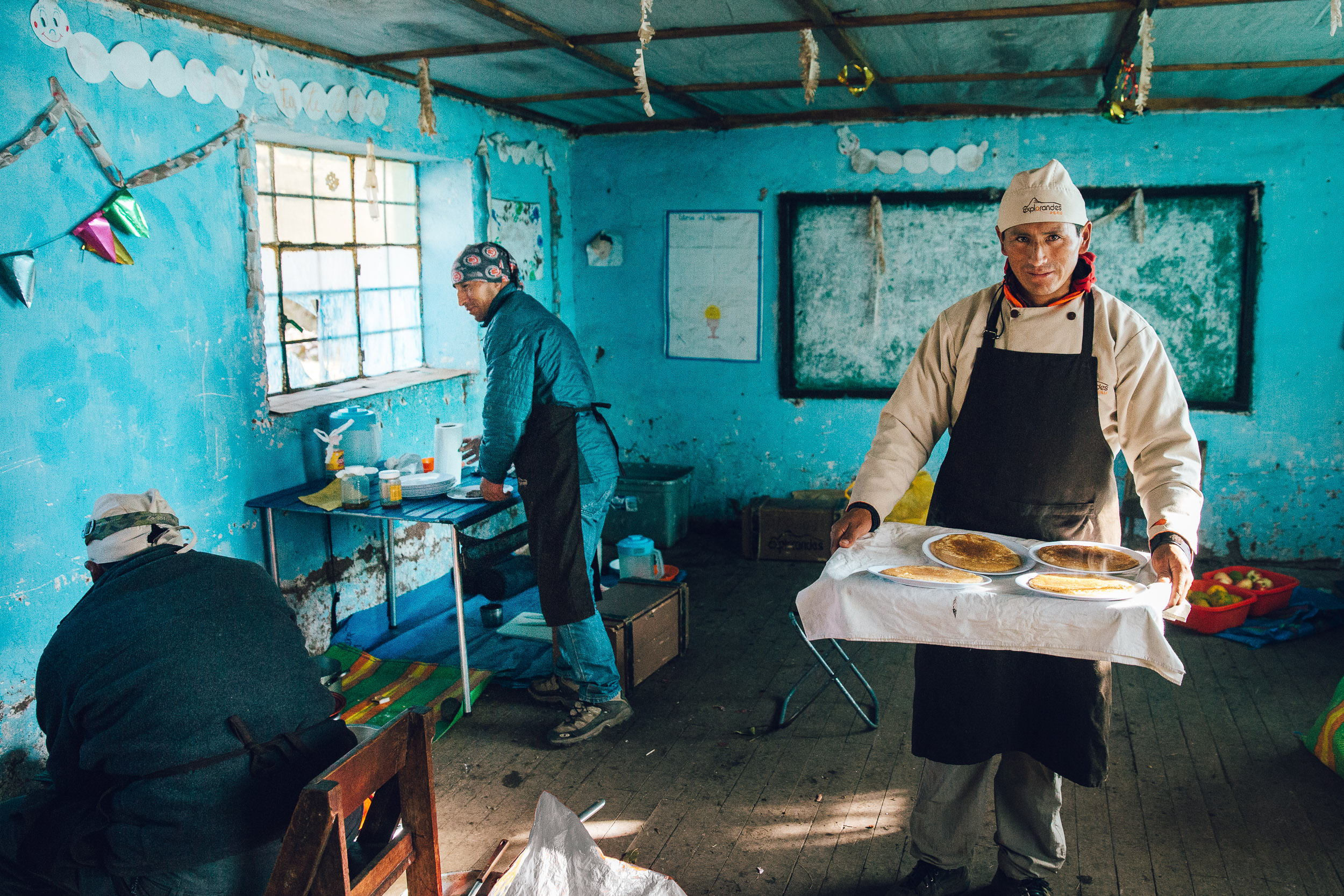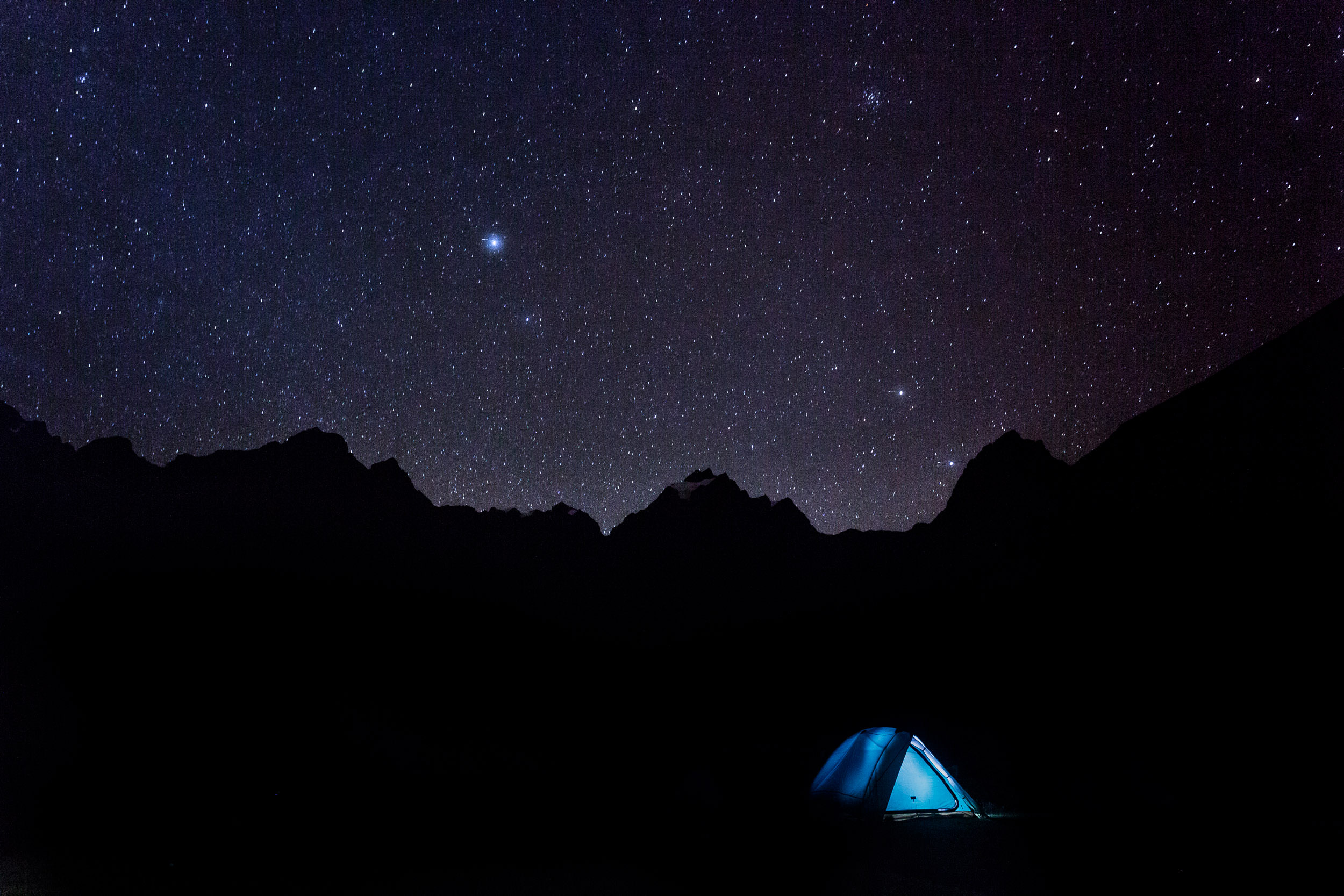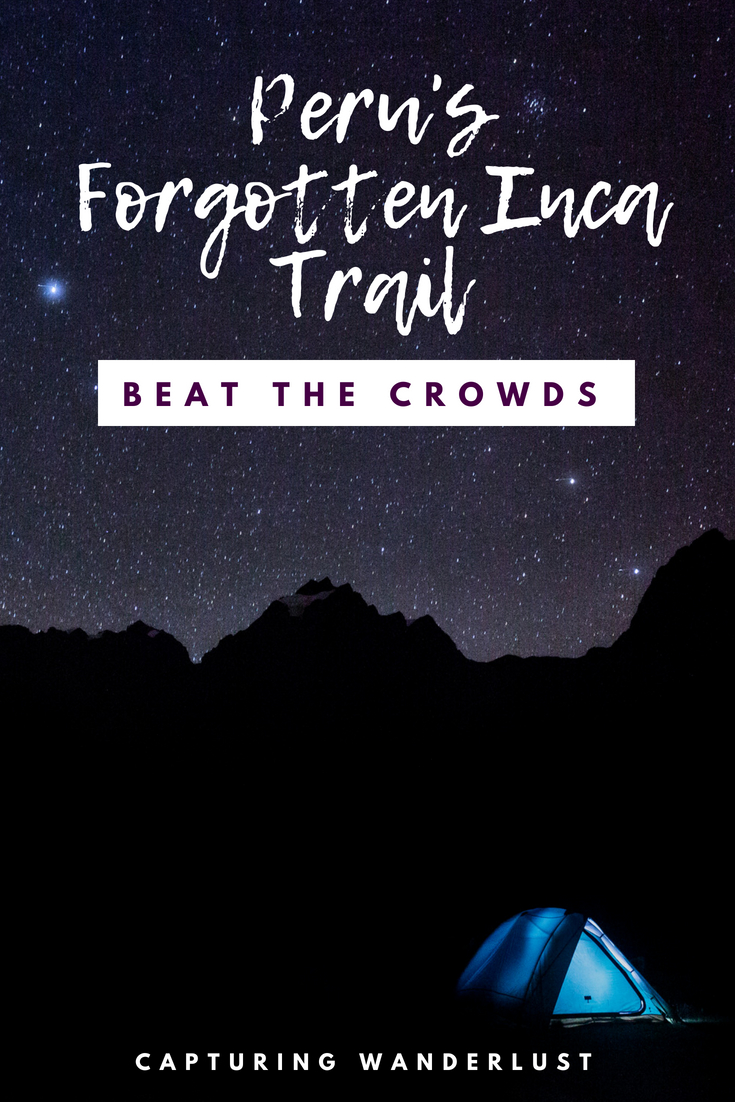TREK TO MACHU PICCHU: PERU'S ANCASCOCHA TRAIL
Text and Photos by Philipp Ammon
An Unforgettable Andean Adventure...
...and Less Crowded Alternative Trek to Machu Picchu...
Peru's Ancascocha trail is nothing short of a stunning alternative trek to Machu Picchu along sections of the old Inca trails surrounding Cusco. Offering a spectacular journey through the Andes, this challenging adventure trek may well be one of South America's best-kept secrets (as far as hiking goes).
The Inca trail to Machu Picchu can be quite crowded in April and May with many eager tourists making the trip to experience the beauty of the Andes. Thankfully, the Ancascocha trail is far less crowded and provides a stunning alternative to the classic hike. In my opinion, it's a fantastic option for more seasoned trekkers or those looking for a challenge. If escaping mass-tourism to find solitude in the mountains is your aim, look no further.
I partnered with Charity Challenge UK and tagged along on one of their fundraiser adventure challenges to provide photography for their first guided tour along the Ancascocha Trail. I joined a small group of trekkers raising funds for nominated charities and experienced the adventure of a lifetime.
The Cusco Region - A gateway for Peru's Adventure Trekking Holidays
The lush green jungle below slowly fades into rolling hills speckled with orange and grey rock. In the distance, jagged snow capped mountains pierce a low hanging mass of cloud and my ears begin to pop. The fasten-seatbelt sign chimes and we begin our descent into Cusco. This is my first trip to South America; The first time my boots will carry me on an adventure-trek to Machu Picchu, along the ancient Inca trail through the Andes. I buckle up and let a sense of child-like wonder that only travel manages to bring about wash over me.
Still, I'm slightly nervous. After a last minute business trip to Antigua, I'm flying in from sea-level to a city that sits at roughly 3,350 meters. I'm on my own and several weather delays have meant I missed my acclimatisation day with the Charity Challenge adventure trekking group I'm supposed to be joining. According to my schedule, they already started their hike early this morning. My watch reads 11:56 AM. At this point, I'm not even sure I'll manage to catch up with them, much less be able to *keep* up with them. I remind myself that this is part of the adventure: charging into the unknown. The cabin doors open, and I feel a familiar altitude-induced shortness of breath take hold of me as I carry my kit off the plane, down the stairs and onto the tarmac.
A stern-faced immigrations officer picks up my passport. She haphazardly rifles through the pages, giving me a quick up and down over her glasses, delicately balanced on the edge of her nose. "Welcome to Cusco," she declares with a half-smile. Thankful there are no issues, I slip my passport into my chest pocket and pick up my bags. I've always found it to be a slightly ironic welcome to every country. A first impression made by a person with robotic features under a sickly green fluorescent light.
Once out of no-man's land I'm greeted with a firm handshake by a local guide called Kenny as I enter the arrivals hall of Alejandro Velasco Astete International. Kenny spots my German passport and lights up. "Wilkommen in Peru," he declares proudly with an almost perfect accent. (He later tells me he studied German and wants to get into a German university.) I'm exhausted from my travels and dragging my feet. "Schnell, Schnell" he politely declares, giving me a friendly thumbs up.
He apologises for his urgency and rushes me to our jeep. At this point, I am fully aware that we have a very narrow window to meet up with the rest of the group before the only vehicle-accessible pass closes and I lose them in the mountains. No time for sightseeing today, but for now at least, some of my worries are put to rest.
The smell of wood-fire stoves hangs in the air as we bounce through the hustle and bustle of Cusco's cobbled and sometimes pot-holed streets by jeep. Unlike my sentiments at home in London, I am bewildered by the sounds of beeping traffic, the shouts from roadside vendors and the relentless flow of city life. Beautiful European architecture stretches across the city centre: Spanish facades all down the narrow side streets leading to the market square. But beneath the surface, I can't help but sense the tragic history of a conquered Incan civilisation. Little suggestions are everywhere - Spanish cathedrals build upon the foundations of Incan temples and banks built with the stones of razed Incan architecture. I only get a glimpse. The street narrows and the city begins to feel less dense. It's much quieter now as we find ourselves winding down roads through vast cornfields, spotted with corrugated tin shacks.
A short old man in a neon uniform stops us at a roadblock a few miles into the mountains. If there's one thing I've learned on travels, it's that there are always short old men in uniforms, no matter where you go -- and regardless of what corner of the World you happen to find yourself in, they all have a habit of making life difficult... He pumps his chest up and approaches our vehicle. Kenny is giving me a knowing grin and hops out to talk to him. Apparently, this is the only road leading to our checkpoint, and this guy is telling us to turn around. According to him, it's closed for the day. Kenny isn't having any of it, and finally "persuades" the man to let us through. Always carry US Dollars.
South America Bucket List Adventure: Camping in the Andes
A few hours have passed now, and my ears pop again as our jeep crawls through streams and lurches over rocky dirt paths. I try to ignore the ever-present sharp drops into the valley below, just inches away from our tire treads. A little part of me feels like I'm cheating myself, getting a ride up the mountain while the rest of the group hike all day to get to camp. But the scenery is spectacular, and I concentrate on the beauty of my surroundings. Before the sun rises tomorrow, I too will be lacing up the boots and beginning my trek to Machu Picchu. I'm caught by surprise when the fresh scent of eucalyptus fills the car through my open window. It's notably green here still - much more so than I would have expected at this altitude.
The rear-view mirror reveals a distant peak veiled by a plume of dust following our ascent. The sun is high, its intensity heating my skin through the car window. Just as I'm beginning to feel restless, I spot a row of tents in a small valley below. Chilipagua at 3,840 meters is our first campsite, and it looks like I may have beat the group here. As I step out to finally stretch my legs, a pair a curious dogs approach me, tails wagging. To pet or not to pet? All the travel guidebooks say to steer clear of the dogs. I reach out my hand and make two new friends. (This will be a trend throughout the trip...)
I can't get over the efficiency: A group of porters has leapt ahead of the hiking group and set up camp with a kitchen and dining-tent. The horses seem to be enjoying the lush green grass and fresh stream water after a hard day's work. The chefs are committed to preparing dinner for a group of around 15, but they still offer to whip me up a fantastic lunch. I haven't eaten since the flight, so when they hand me a hearty plate of rice, beans and sausage, my eyes light up. The dogs are back too now looking at me with bug-eyes. Kenny is asking me if I want seconds and I can't say no. I keep checking myself for signs of altitude sickness, but so far, I am feeling great.
On the horizon, tiny colourful specs begin to emerge, slipping over a distant ridge. Kenny is looking relieved to see the rest of the group making their way down a narrow path leading to our campsite. For me, it means I can finally rest easy, knowing I caught up with the people I will be spending the rest of the week with.
One by one, I introduce myself to weary faces, all delighted to make camp for the night. Leading the group is George, a local Peruvian with a distinctively American accent. He has the rugged features of a man that has spent a great deal of his life outdoors and a smile that makes you feel immediately welcome. There is something about him that tells me he's found happiness living a life of adventure; one closely connected to nature. I'm also pretty sure he's the kind of man that won't take shit from anybody. I take an immediate liking to him.
After saying good-bye to Kenny, I join the group for dinner in a large dining tent the porters have set up. The chefs serve a delicious meal of fresh fish and steamed vegetables with rice. I sip at a cup of coca leaves steeped in hot water. It has a particularly bitter taste to it, but I'm told it will help stave off altitude sickness. Coca leaves are considered to be sacred here. Every now and then along our hike, I notice George make an offering of leaves to the mountain for safe passage.
By the time we finish chatting over dessert and tea, the temperature has dropped significantly. I slip on my down parka and step outside to a view that reminds me how far away from it all we really are. A moonless night sky is perforated with the undiluted light of a million stars, opening up to unfamiliar southern constellations. Everybody is tired from their hike and has retired early. Silence falls on our camp and I sit in solitude for a few hours. It's the first time I've really been able to enjoy peace and quiet for weeks. Bundled up, I watch the Milky-way slowly drift over our tents, the jagged black silhouettes of the Andes lining the foreground.
Morning comes too soon. The first night in a tent is never easy: I wake up at 2 AM with pins and needles in my right arm. Five minutes later it's the left. I've managed to roll off my sleeping matt. A rock is poking my back. Some rustling in the bushes outside wakes me from a half-slumber. I pull the hood of my sleeping bag tightly over my head to feel warmer and fall back asleep. Before I know it, my alarm is beeping. 5AM.
A few head-torches float around lazily outside like fireflies projected on my tent wall. Still wrapped in my sleeping bag, I manage to poke my head outside to get my bearings. Mostly, it's still dark but a few morning rays subtly paint the distant peaks with a dull orange glow.
The frosted grass crunches beneath my feet as I drag myself from my tent to the dining pavilion. George looks ready to go, but somehow, I don't get the same impression from the rest of us. With a few cups of hot coca-tea and strawberry-jam laden pancakes in my belly, however, I've found some optimism for the heavy hike we have ahead of us. I look up from my plate and see my dog-buddies patiently waiting outside the tent. It's almost as if they are smiling at me... Sadly, I've scuffed down every last crumb. I give them both a pat on the head, and sling my backpack over my shoulders.
Discovering the Old Inca Trail to Machu Picchu
By now, the sun has slipped over the surrounding peaks, flooding the valley we're ascending with a warm light. The thick frost that lined our tents earlier this morning has all but receded to the remaining shadows. I run my hands through dew beads on tall, yellow blades off grass, hopping over streams and rocks. Looking back, I can see our porters loading equipment onto the horses as they pack up camp. They'll pass us shortly, and make way towards the next checkpoint where they will be up and running when we arrive.
There is something special about knowing the trail you're hiking down was once used by Incan messengers some six-hundred years ago. George stops to point out a few heavy rocks, cut into large grey bricks lining the path we're following. He tells us they were carefully placed there by the Incas to mark important routes. Not much indicates their rich history now, sunken in the river of time, but ever so often, I spot the old cut stones that marked their way. The path has dropped now, far below where it used to sit, slowly carved out by the people and animals that have passed through over the centuries.
Muña plants grow in abundance along the old Inca trail. They are used by local people to treat a variety of ailments including AMS.
We take a break beside a narrow stream splitting the large valley in two. Yellow and purple blossoms speckle the mountain plains as far as the eye can see, and all around us, horses graze on the lush grass that grows abundantly high in the Andes. Wilson, our second guide, notices my interest in the flora, and shows me a bushel of leaves growing just behind us. He's a more soft-spoken man, with a passion for and astute expertise in local history. I find out from him later that he studied in California before returning to work as a guide in his home country. He calls me over, as he a picks a stem from the plant rubbing it between the palms of his hands. He passes me some and I follow suit. A pleasant fresh scent reminiscent of mint fills the air. Different variations of the Muña plant grow above the tree line in the Andes, and are used as remedies for various ailments. This particular one is said to work wonders for altitude sickness, and as I inhale it, I feel it open my airways.
Higher and higher we climb. The air is stretched thin, and I'm beginning to notice a nagging headache. Every peak at this point seems to reveal yet another mountain to be climbed farther off somewhere. Here, sheep outnumber us a hundred to one. Aside from our group, we haven't crossed paths with anybody but for a couple of farmers.
A few houses spot the landscape ever so often, built mostly of stone with thatching for roofs. We are well above the tree line here, and timber is not really an option. Stones and grasses, on the other hand are everywhere. The local farmers here live off the land in small families. Crops consist mostly of various tubers, potatoes and beans. In the valley far below the peak we've been summiting, I watch a woman herd a giant flock of sheep towards her home. A white mass contrasted by the green, they move in unison -- almost hypnotically. As a city dweller, I can't help but wonder what it must be like to live off the land high up in the Andes, so far away from it all.
The weather now shifts rapidly from hot to cold, as heavy clouds drift between mountains, blocking out the sun on their way. They rise and fall, almost as if they were the breath of some giant slumbering creature hiding in the rocks. Everything is beginning to look less green now and from this vantage, we can spot the highest glacier-scarred mountains, gnarled and shaped over millennia. It's no surprise the Incas believed them to be Earth's connection with the Gods; inhospitable to us mere mortals. The tallest point along the old Ancascocha trail reaches the Pampaqasa mountain pass at 4550m. All I can do is squint in a measly attempt to relieve the sharp headache that has been pulsing in my forehead for the last few hundred meters. My stomach turns, and I push on for the final stretch to the top. Soon it will all be downhill.
The Benefits of a Guided Hiking Tour in Peru
George, our faithful guide, takes a break during our ascent along the Ancascocha trail.
As we ascend, the ridge of the mountain pass drops below our eye-line. Like a reverse-curtain, it reveals an incredible view into the vast green valley below. Rivers run like silver veins between rolling hills and as far as the eye can see, an epic landscape reminds us of how small we really are. I take a seat to catch my breath. George is looking at me, and I know he can see I'm struggling to acclimatise to our altitude. He reaches in his pocket and pulls out a small bag of dried coca leaves. "Tuck a stack of these in your cheek", he grins "It will help with the altitude." For the locals, *this* is but a hill. For me, a city-slicker with a dependency on oxygen, I very much doubt a few leaves will ease this sudden hop from sea-level.
With a bitter wad of now soggy coca leaves stowed away in my cheek, every meter we drop feels like a stone removed from my chest. Breathing feels easier, but my headache doesn't want to let up. I'm beginning to feel tired, and very much looking forward to reaching camp. A makeshift bridge made from clay and brittle, weathered wood crumbles under my boots, sending my leg straight through into a small stream below. I'm still loving every second of this, but a sensation of relief washes over me when I spot our tents neatly lined up just beyond the next ridge, like a welcoming finish line for today's challenge.
The outdoor wannabe in me feels like I'm cheating by having porters carry some of my kit by horse, set a tent up for me, and have a hot meal cooked and ready to go within an hour of my arriving. I'd be lying though if I said I wanted to do it all myself. The truth is, I could get used to this whole "glamping" thing. I dump the kit I'm carrying in my tent, and go for a well deserved hot drink.
Dr Carlos shoots me a worried glance. I must be slumping over the table more than I thought. I realise I've been prodding at my food, completely uninterested. My head is pounding, especially now that I've stopped hiking. I feel nauseous, and food is the last thing on my mind. He walks over and asks me what's up. Until this point, I haven't really had a chance to speak with him. He's a friendly, quiet man, who works at a clinic in Cusco. He tags along on adventure treks to look after anybody who might fall ill or get injured along the way. I couldn't be more grateful he's come along. Acute Mountain Sickness (AMS) can become a pretty serious problem, and if not dealt with properly, can evolve into something much worse. A quick blood-pressure and oxygen count determines I could use a hit of the good ol' 02. Carlos hooks me up with Diamox and a small oxygen tank, which I breathe from while resting in my tent. After about 20 minutes, the nausea fades, and I'm finally feeling a ravenous appetite kick in.
At this point, a few sun-stained mountain tops are all that's left before night will fall. George, tells me that in Quechua, the word "Ancas" means the small of a horse’s back and in this case refers to the space between two tall mountains. Cocha means lake. He points to the pass between two peaks looming over our campsite and tells me the lake is up there. In my state, I can’t find the energy to climb up and find it. I take solace in watching the last rays of sun illuminate the mountains that surround us on all sides. I scoff down my dinner, get in a few star-photos and retire to bed. My watch reads 8:35 PM. Outside, the temperature has dropped well below zero, and will probably continue. I layer up in everything I've got and slip into my sleeping bag. I've never found it particularly comfortable sleeping in a tent, but after a long and strenuous day of hiking, any bed feels like a godsend. Tonight, I sleep like a rock.
Reaping the Benefits of a Less Crowded Inca Trail
There's nothing quite like the wonder of zipping open your tent door to crisp morning air and another day of adventure and trekking. After a solid ten hours of sleeping, I'm feeling back to 100%. I head out with my camera and follow my nose to a small empty building that the chefs have taken over to set up a makeshift kitchen. They're busy cooking breakfast on propane stoves brought in by our trusty crew of horses. I'm not quite sure what kind of magic they are working, but they keep coming up with restaurant-grade meals. It's unreal.
Back on the trail, I can tell that we've made some downward progress. We come across a small farm where a shepherd is tending to his flock. A newborn sheep, still covered in amniotic fluid stumbles alongside its mother. The farmer greets us with a big smile. I can tell he is proud of what he's built. With translation help from George, I ask him if he would be willing to let me take a few portraits. I get the impression his wife is not as keen on the idea: she sees the camera come out, and makes a mad dash for the house, lifting her dress as she runs. No language required here -- the farmer looks at his wife, then me, and shrugs as he lets out a chesty laugh. I can completely sympathise with her. It must be absolutely bizarre to live up here and have a horde of strange people come through and then have the nerve to ask for photos too. Given that we haven't seen any other trekkers on this trail, I can't imagine they get too many visitors.
Further down, the landscape takes on a multitude of colours. Bright purple orchids grow in the wild, butterflies flutter along the trail, and ever-so-often a new and bewildering flower grabs my attention. I approach the countless rickety bridges over a wild rushing river with much more caution than yesterday's as we zigzag our way down the mountain. Breathing feels easier, and the majority of our walking is downhill. The valley we are descending through opens up to the foot of Mt. Veronica, or Huajayhuillca in Quechua. I can see why the Incas named it the "Holy Tear" -- its' perfectly shaped peak, covered in glacial ice glistens in the sun like a silver tear.
Before I know it, we seem to be trekking through jungle. Thick vegetation grows everywhere, and it's beginning to feel downright hot. As sweat soaks through my clothing, I'm finding it hard to grasp that the temperature dropped to -12 C where we slept last night. We stop for a refreshing dip in a mountain river. The ice-cold water is a shock to the system but brings back some energy, allowing us to push our way on to camp.
Small cattle farms and maize fields along the trail are a surefire indication that we're getting closer to civilisation. It's still relatively early in the afternoon when we spot our campsite through a clearing in the underbrush. Tonight's stop is in a field just outside the small town of Camicancha. A few local women must have seen our tents and known we were coming. They have set up a small "bar", using steel buckets and a constant refill of cold river water to cool the drinks. I clearly can't contain myself at the sight of cold beers. Dr Carlos shoots me a huge smirk -- "I can tell you're feeling better" he chuckles. I sit down with him, Wilson, and a couple of our porters on the grass. The boots come off. After two days of intense hiking, I can't think of anything better than soaking up the sun with a stunning view of the Peruvian mountains and a cold, local beer. It's pure bliss. We round off the evening with a campfire, Peruvian ghost stories and s'mores to celebrate. Tomorrow, at 4 AM we commence on an all day uphill trek to Machu Picchu via the Sungate.



